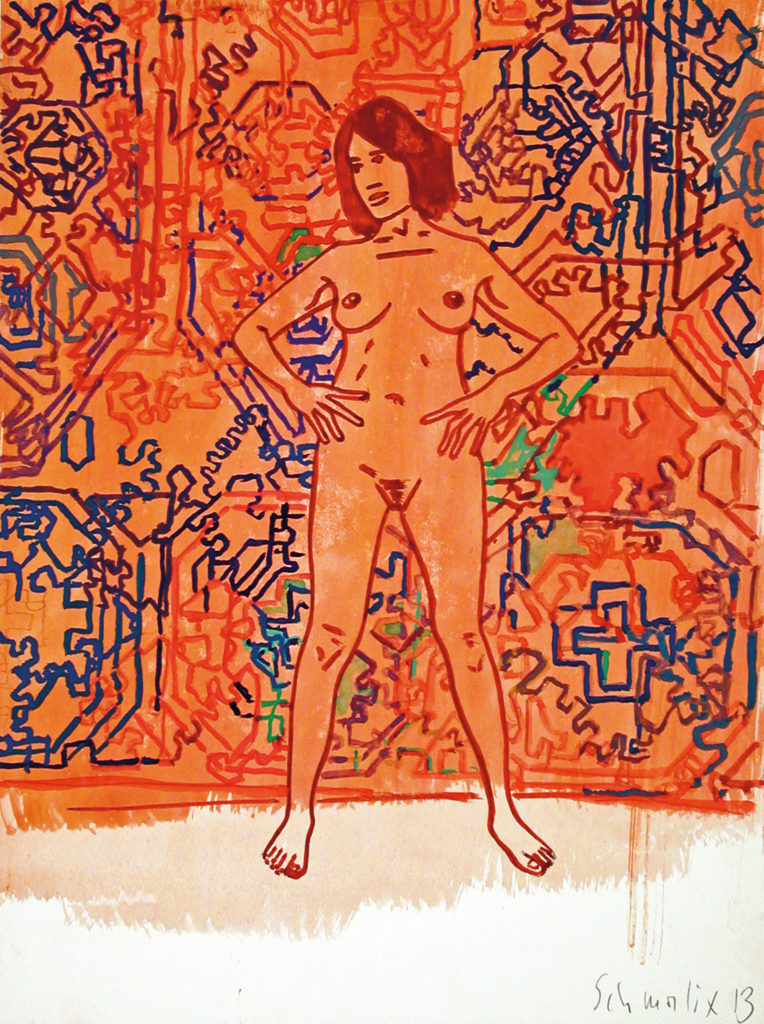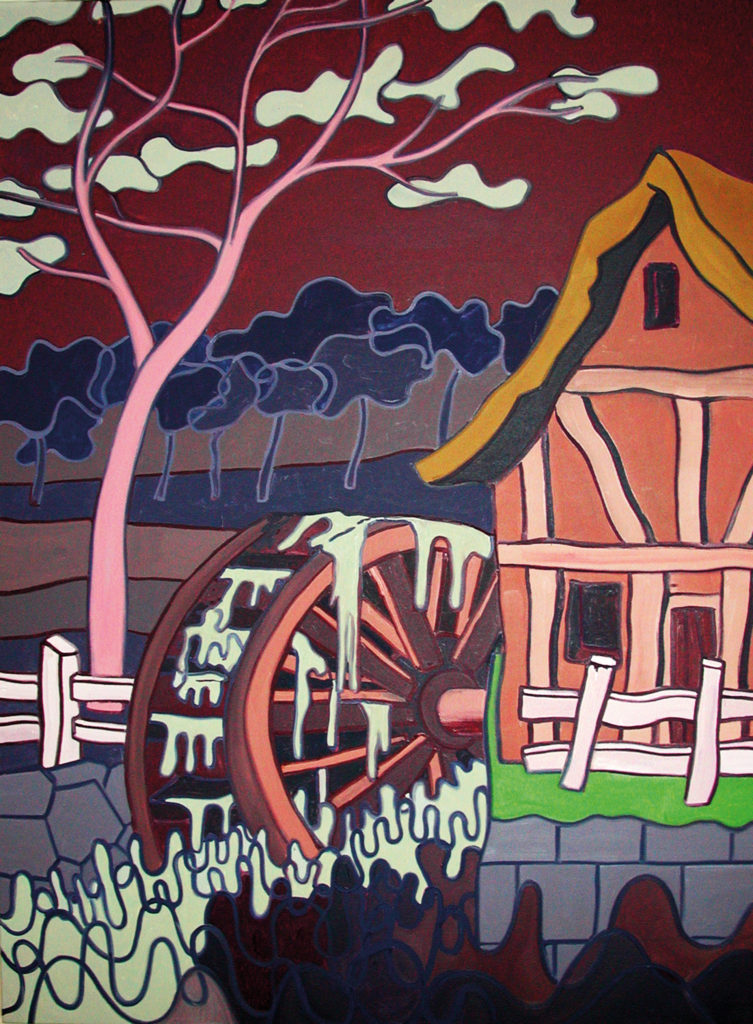Hubert Schmalix
Graz 1952 – 2025 Los Angeles
“Hubert Schmalix is one of Austria’s most prominent contemporary artists. As a protagonist of the ‘Neue Wilde’ (Neo-Expressionist) movement, he cast aside the avant-garde claim that good art is only good if it isn’t immediately comprehensible. In doing so, he attained a new freedom that resulted in new forms of the traditional genre of painting, a resurrection that instantly received international acclaim,” wrote Ingried Brugger to mark a comprehensive exhibition at Vienna’s Kunstforum in 2015.
In 1979, the young Schmalix had his art shown in the forward-looking “Europa 79 – Art of the 80s” exhibition in Stuttgart, and in 1983 he was invited by the Tate Gallery in London to present his works as part of “New Art”, an important overview exhibition of contemporary art. At the beginning of the 1980s, Hubert Schmalix established a new Austrian painting scene together with Siegfried Anzinger, Hubert Scheibl, Erwin Bohatsch, Herbert Brandl and Gunter Damisch; they deliberately broke with the previous generation and distanced themselves from Viennese Actionism and self-destruction. The revolution had already been fought, and now it was time to paint again: subjectively, unconcernedly, and life-affirmingly.
In 1979, the young Schmalix had his art shown in the forward-looking “Europa 79 – Art of the 80s” exhibition in Stuttgart, and in 1983 he was invited by the Tate Gallery in London to present his works as part of “New Art”, an important overview exhibition of contemporary art. At the beginning of the 1980s, Hubert Schmalix established a new Austrian painting scene together with Siegfried Anzinger, Hubert Scheibl, Erwin Bohatsch, Herbert Brandl and Gunter Damisch; they deliberately broke with the previous generation and distanced themselves from Viennese Actionism and self-destruction. The revolution had already been fought, and now it was time to paint again: subjectively, unconcernedly, and life-affirmingly.
In 1984, the young artist travelled to the Philippines, then to America, and in 1987 he moved to Los Angeles. Despite the fact that he has lived and work in the United States ever since – including teaching at the University of California – he has retained his strong links to Austria. In 1986 he began lecturing at the University of Applied Arts, and in 1997 was appointed professor at the Academy of Fine Arts in Vienna.
In his creative practice, Hubert Schmalix transitioned away from the emotional, expressive gestures of “intense” painting as early as the mid-1980s, and instead began to develop the visual syntax that continues to characterize his wide-ranging oeuvre today. His approach to painting is now constructively concentrated, the structure of his works clear and considered, the application of paint even. He deliberately draws on art history in his work, yet “while it may seem a contradiction in terms, Schmalix’s paintings breathe a fresh classicism.” (Wilfried Skeiner)
In his creative practice, Hubert Schmalix transitioned away from the emotional, expressive gestures of “intense” painting as early as the mid-1980s, and instead began to develop the visual syntax that continues to characterize his wide-ranging oeuvre today. His approach to painting is now constructively concentrated, the structure of his works clear and considered, the application of paint even. He deliberately draws on art history in his work, yet “while it may seem a contradiction in terms, Schmalix’s paintings breathe a fresh classicism.” (Wilfried Skeiner)
Standing on Both Legs
Mill by Moonlight
Standing on Both Legs

from the series “Casa Tesoro
Gouache on cardboard
signed and dated 2013
51 x 38 cm
Gouache on cardboard
signed and dated 2013
51 x 38 cm

